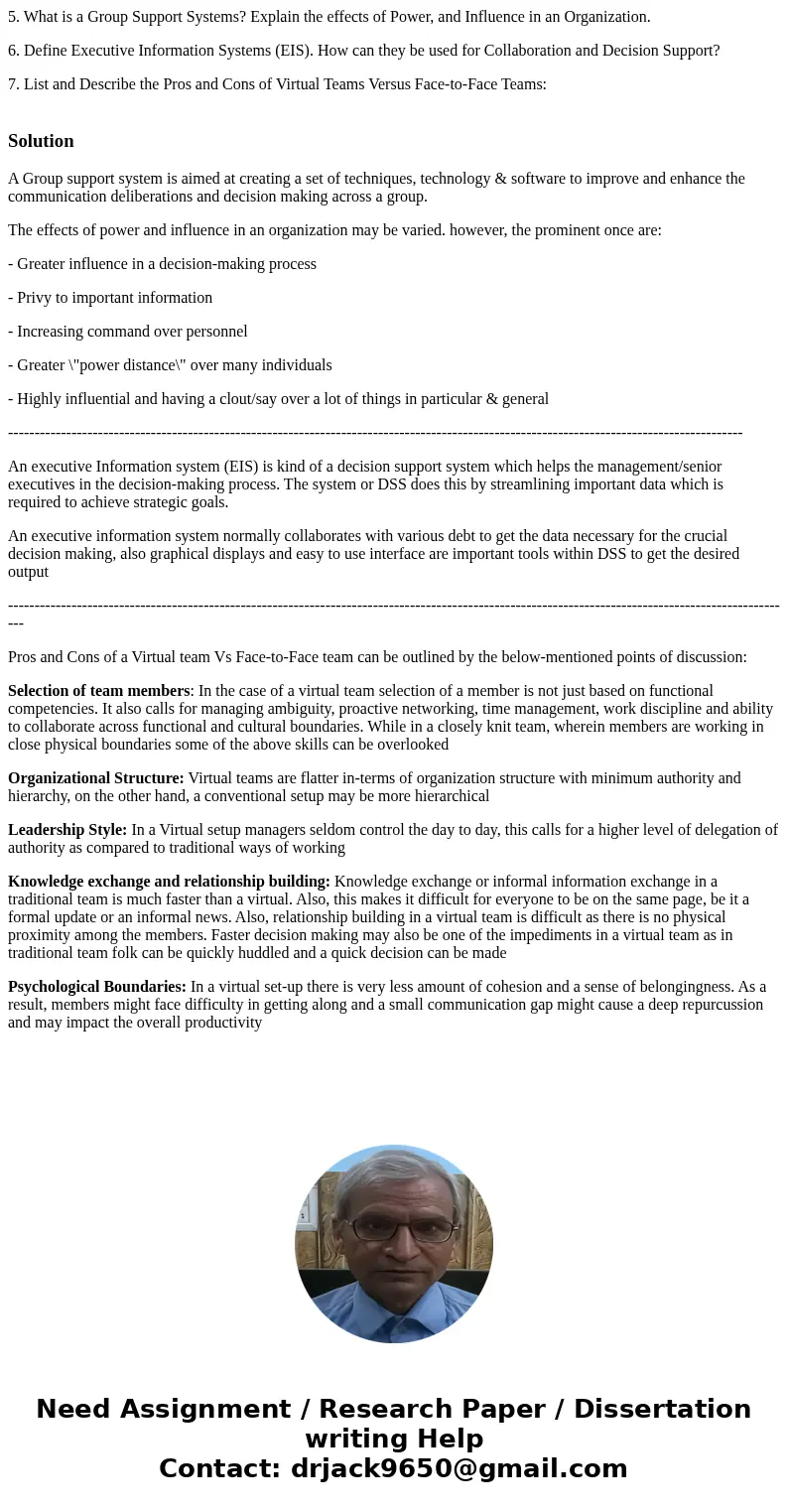5 What is a Group Support Systems Explain the effects of Pow
5. What is a Group Support Systems? Explain the effects of Power, and Influence in an Organization.
6. Define Executive Information Systems (EIS). How can they be used for Collaboration and Decision Support?
7. List and Describe the Pros and Cons of Virtual Teams Versus Face-to-Face Teams:
Solution
A Group support system is aimed at creating a set of techniques, technology & software to improve and enhance the communication deliberations and decision making across a group.
The effects of power and influence in an organization may be varied. however, the prominent once are:
- Greater influence in a decision-making process
- Privy to important information
- Increasing command over personnel
- Greater \"power distance\" over many individuals
- Highly influential and having a clout/say over a lot of things in particular & general
-------------------------------------------------------------------------------------------------------------------------------------------
An executive Information system (EIS) is kind of a decision support system which helps the management/senior executives in the decision-making process. The system or DSS does this by streamlining important data which is required to achieve strategic goals.
An executive information system normally collaborates with various debt to get the data necessary for the crucial decision making, also graphical displays and easy to use interface are important tools within DSS to get the desired output
-----------------------------------------------------------------------------------------------------------------------------------------------------
Pros and Cons of a Virtual team Vs Face-to-Face team can be outlined by the below-mentioned points of discussion:
Selection of team members: In the case of a virtual team selection of a member is not just based on functional competencies. It also calls for managing ambiguity, proactive networking, time management, work discipline and ability to collaborate across functional and cultural boundaries. While in a closely knit team, wherein members are working in close physical boundaries some of the above skills can be overlooked
Organizational Structure: Virtual teams are flatter in-terms of organization structure with minimum authority and hierarchy, on the other hand, a conventional setup may be more hierarchical
Leadership Style: In a Virtual setup managers seldom control the day to day, this calls for a higher level of delegation of authority as compared to traditional ways of working
Knowledge exchange and relationship building: Knowledge exchange or informal information exchange in a traditional team is much faster than a virtual. Also, this makes it difficult for everyone to be on the same page, be it a formal update or an informal news. Also, relationship building in a virtual team is difficult as there is no physical proximity among the members. Faster decision making may also be one of the impediments in a virtual team as in traditional team folk can be quickly huddled and a quick decision can be made
Psychological Boundaries: In a virtual set-up there is very less amount of cohesion and a sense of belongingness. As a result, members might face difficulty in getting along and a small communication gap might cause a deep repurcussion and may impact the overall productivity

 Homework Sourse
Homework Sourse